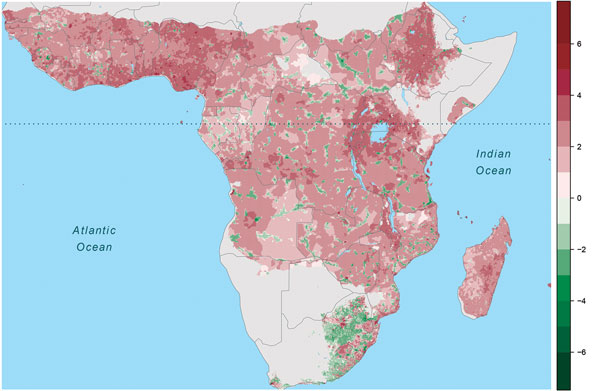Volume 23, Number 3—March 2017
Research
Spatiotemporal Fluctuations and Triggers of Ebola Virus Spillover
Figure 5

Figure 5. Change in human population size (log10/25 km2 grid cell), Africa, 1975–2015. Warm colors indicate increased population size, cool colors population declines. Dotted horizontal line marks the equator.
Page created: February 24, 2017
Page updated: February 24, 2017
Page reviewed: February 24, 2017
The conclusions, findings, and opinions expressed by authors contributing to this journal do not necessarily reflect the official position of the U.S. Department of Health and Human Services, the Public Health Service, the Centers for Disease Control and Prevention, or the authors' affiliated institutions. Use of trade names is for identification only and does not imply endorsement by any of the groups named above.